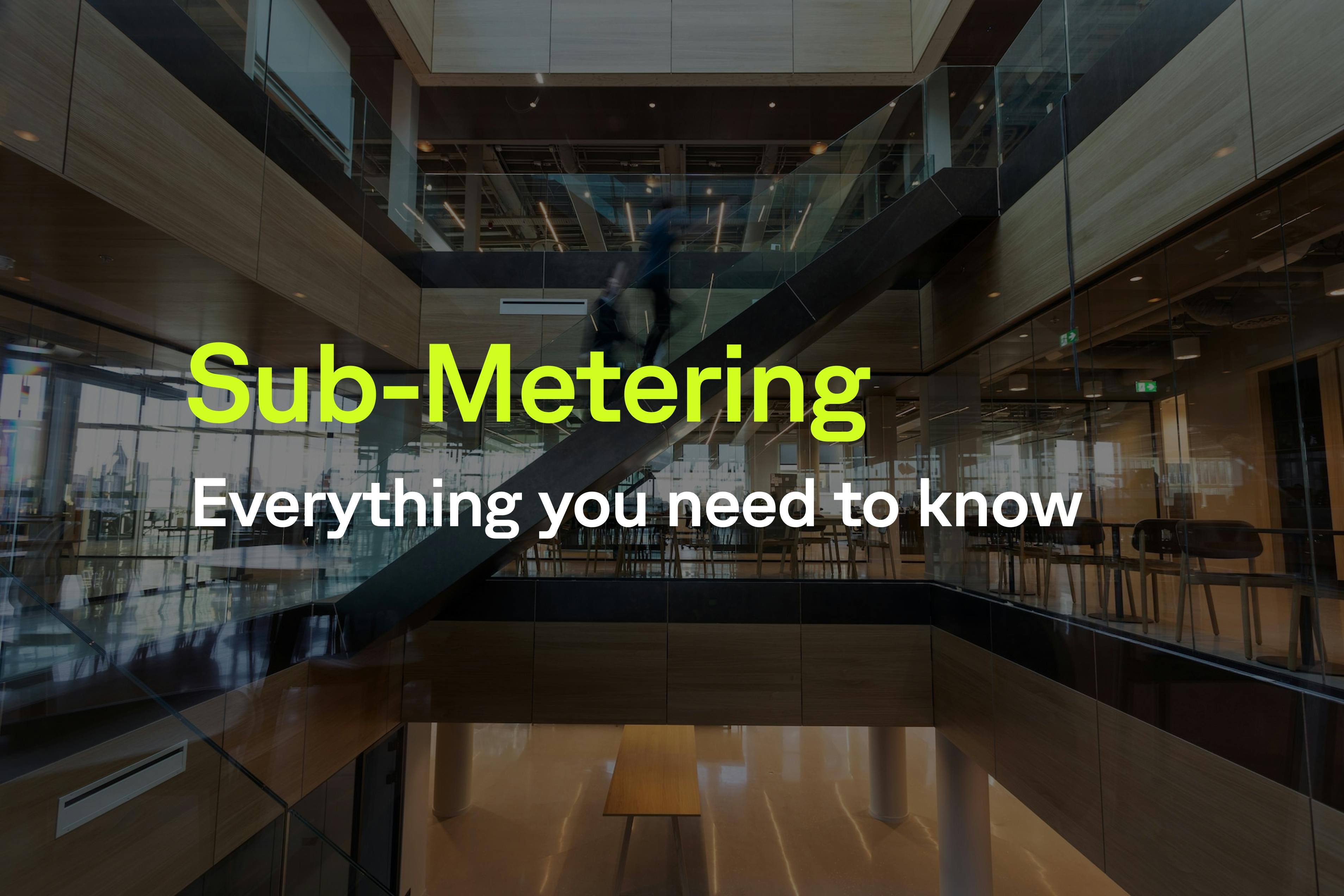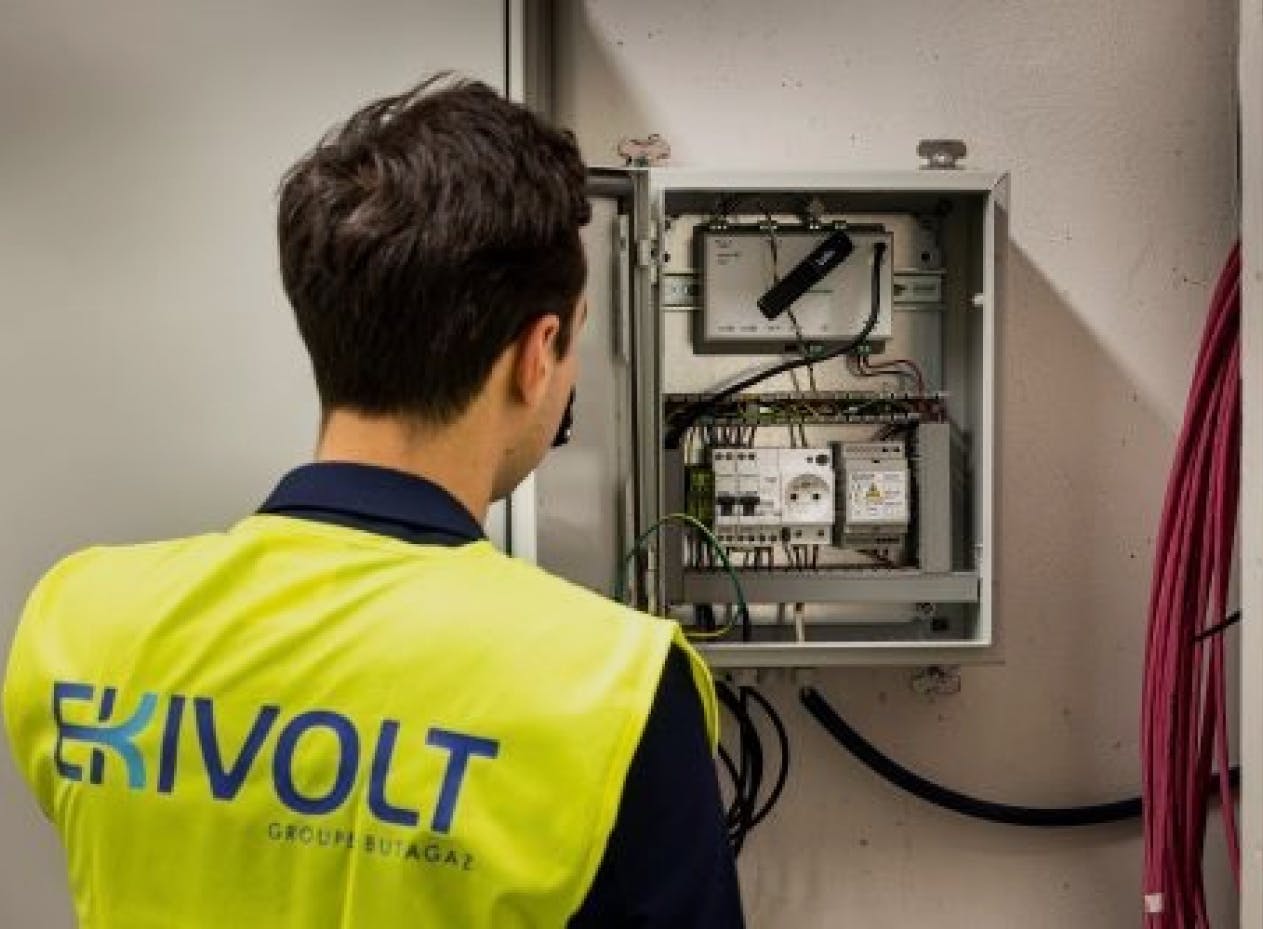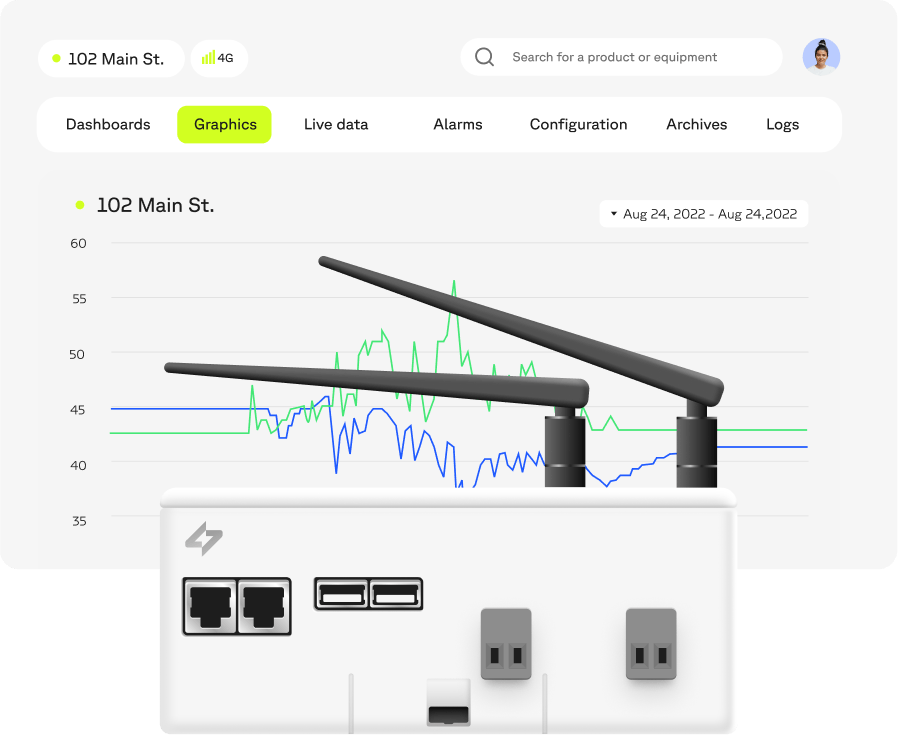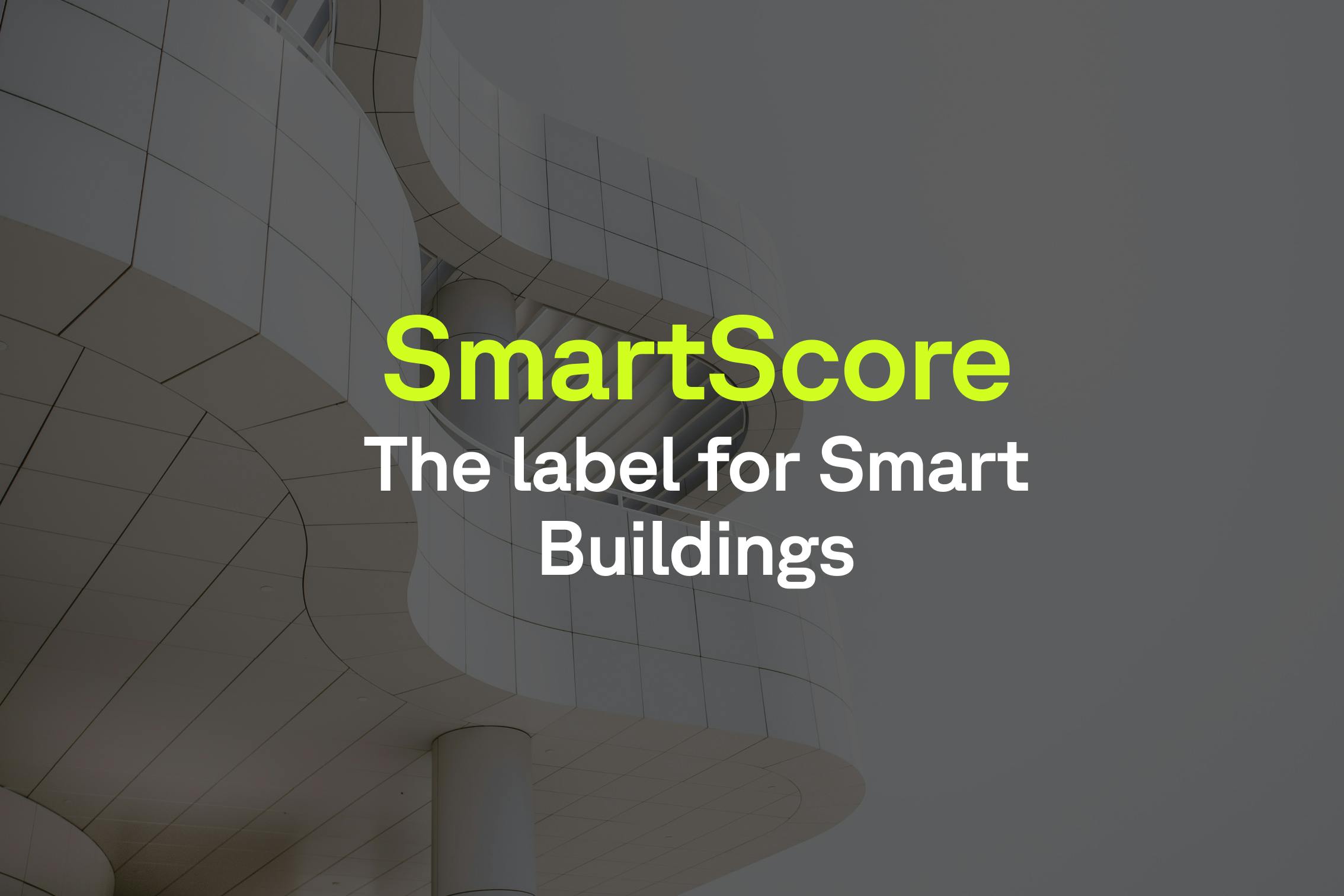The Basics of Sub-Metering, How it Works, and Its Advantages

Would you like to precisely understand how to manage your electricity bills? Are you keen on identifying potential energy wastage sources in your building? Discover how to combine sub-meters and connected technologies to effectively optimize your energy consumption.
Why install sub-meters in your building?
L'utilisation de sous-compteurs dans votre bâtiment est essentielle pour une gestion efficace de l'énergie et une optimisation des ressources.
Understanding and optimizing consumption
Providing a detailed breakdown of the electricity consumed within a building, a sub-meter, or divisional meter, enables you to identify and better comprehend your consumption habits.
This nuanced understanding smartly guides users towards more responsible daily behaviours. It's also helpful for identifying abnormal consumption patterns (e.g., high heating during periods of absence) or energy-saving opportunities. This way, you can focus your energy optimization efforts on the most consumptive elements as a priority.
For instance, you can study specific lighting or heating circuits in a location, or measure the consumption of a single piece of equipment to assess its impact on overall consumption.
One of the sub-metering objectives is to identify the most energy-intensive zones, circuits, or equipment to deduce adjustments needed for more efficient energy use.
Wattsense's Added Value: For multi-site analysis, our product, the Tower, allows you to consolidate consumption data from all your sub-meters into a single interface. This multi-site interface is perfectly suited for organizations with a portfolio of multiple buildings.
Cost Sharing
Using an electrical sub-meter facilitates fair cost-sharing in shared environments.
However, it's important to note that whether in a shared or leased space, the sub-meter is not intended for electricity rebilling. This practice is prohibited by legislation. The sub-meter is used for transparent calculation and fair distribution of monthly charges. To ensure legal compliance, the sub-meter used must be MID-certified.
For instance, consider shared office spaces where each tenant company uses electricity for its own needs. In this setup, the offices are equipped with a main meter (single point of supply). Sub-metering then accurately quantifies the consumption of each entity, simplifying the fair allocation of common charges.
With electrical sub-meters, each occupant contributes financially based on their actual consumption, thereby preventing disputes and inequalities
Fair energy billing thanks to sub-metering
EKIVOLT deploys its energy distribution solution for the tertiary sector with Wattsense.

Installing electrical sub-meters
How to install an electrical sub-meter?
The installation of one or more sub-meters does not require any specific administrative procedures. Any property owner can legally add an electrical sub-meter to their setup without needing specific authorization, as long as the installation remains compliant with the current electrical standards once modified. The only illegal practice is using a sub-meter to resell a portion of the consumed electricity.
➔ Note: Only an energy distributor is authorized to resell electricity.
Who can install an electrical sub-meter?
The installation of a main electrical meter, and everything upstream, falls within the competence of the technicians working for the energy utility company of the country where you are operating.
However, anything installed downstream of the main meter (including sub-meters) is the responsibility of the building owner. In this context, the installation of an electrical sub-meter can be carried out by a technician or an electrician of your choice. The involvement of the electricity distribution network operator is not required.
It's worth noting that installing a sub-meter is not a routine operation. It requires a certain level of expertise in electricity and should be entrusted to an experienced professional to ensure the safety of your network.
Good to Know: There are now electrical meters communicating via LoRaWAN with open TOR. Their installation is simple, and quick, and does not require you to stop the technical or industrial installation downstream of the meter.
Creating a metering strategy
A metering strategy is a detailed document outlining how electrical sub-meters will be distributed throughout a building or facility. It serves as a systematic tool aimed at organizing and identifying the equipment used to measure electrical consumption on-site.
The strategy begins by identifying the various areas within the building that require separate measurements of their electrical usage. For each designated zone or piece of equipment, the plan specifies the type of sub-meter to be utilized, its precise location, and the chosen communication protocol for data retrieval. Each sub-meter is also assigned a unique identifier.
In essence, the metering strategy addresses key questions: “What exactly will be measured? What equipment will be used? Where will it be physically situated on-site? How will the data be collected, stored, and analyzed?”
If the installation of sub-meters is part of a broader initiative to enhance energy efficiency, the metering strategy serves as a comprehensive blueprint for implementation. It functions both as a strategic guide and a practical roadmap.
To read: Comprehensive guide to implementing an energy metering strategy
How to retrieve data from a divisional sub-meter?
Retrieving data from a divisional sub-meter can be done by manually reading the data on each sub-meter. However, this method can be tedious, especially in modern buildings equipped with hundreds of meters.
The more suitable alternative is to collect the data through communication buses, allowing connection to a supervisor. This ensures data transmission, either via cable or wirelessly, to a dedicated web interface or management system (such as BMS, or EMS), thus facilitating remote data collection and analysis of energy data.
Differences between public and private networks
When analyzing the electrical consumption of a location, it is crucial to differentiate between information from the main meter and those from sub-meters. Generally, unlike sub-meters, data collection from the main meter is handled by the distribution network manager.
Important note: Our Wattsense connectivity solution is perfectly suited for collecting consumption and metering data from sub-meters. However, if you wish to retrieve metering information from the main meter via the Wattsense solution, then the installation of a TIC gateway (remote-metering data) will be necessary. For more details, feel free to contact our sales team.
How to read a sub-meter?
As previously mentioned, remote collection of sub-meter data avoids manual reading. However, once this data is collected, the question arises of how to exploit it. The entire purpose of specifically measuring certain electrical consumption is to deduce the improvement actions to be taken. This is where an Energy Management System (EMS) comes into play.
The Role of Energy Management Systems (EMS) in Data Exploitation
Through real-time monitoring of sub-electric consumption (but not only), EMSs quickly identify anomalies or inefficient energy behaviours.
To analyze consumption, EMSs are custom-programmed at each site to be studied. This automated control allows for the production and highlighting of key and relevant indicators for active energy management.
Here are some examples of possible analyses with energy management software:
- Consumption habits analysis: By presenting data from different zones and/or uses in the form of graphs, it's possible to visualize consumption trends. What are the trends based on seasons or times of day? Are there consumption peaks at specific times or under particular conditions?
- Comparison of different uses: Sub-metering, coupled with an EMS, provides an overall view of consumption by use. It indicates priority areas for improvement to reduce consumption.
- Implementation of alerts and notifications: EMSs can be configured to generate alerts in case of abnormal behaviours or deviations from predefined parameters (undesirable energy leaks or overconsumption). This allows for quick intervention upon detection of a problem, minimizing energy losses.
- Contextual analysis of collected data: To adapt your actions as closely as possible to the real conditions of your site, you can choose to weigh certain measurements based on their context. Weighing factors can vary: unified degree days (UDD), geographical location, the orientation of the facade, activity period, etc.
- Drafting of monitoring reports: By comparing trends from one period to another, you can assess the real effectiveness of the energy actions implemented.Le rôle des systèmes de gestion de l'énergie (EMS) dans l'exploitation des données
Specific advantages of the wattsense technology
The Wattsense Tower
Thanks to its ease of installation and versatility, the Wattsense Tower is an excellent starting point for collecting and centralising data from your sub-meters and other technical equipment. You can then implement the energy management system (EMS) of your choice in your buildings.

Its main advantage lies in the ability to easily connect a multitude of technical equipment and sensors of different generations without requiring specific technical knowledge.
Our solution is compatible with all the main communication protocols. Connect all your existing or future devices - sub-meters, sensors, lighting, heating appliances, heat pumps, etc. - at no extra cost.
You can then access all your collected data via the Wattsense console. Designed for optimal readability, The Wattsense Tower allows you to view your measurements as graphs or diagrams and set up alarms. Finally, our solution offers seamless integration with third-party software, such as energy tracking applications or Energy Management Systems (EMS). If you already have software in place, Wattsense technology enables you to take energy optimization to the next level.
Optimizing consumption with electrical sub-metering
Once your EMS has helped identify energy "waste" over a significant measurement period, you can implement actions that seem most relevant. For instance, spotting consumption peaks might prompt you to adjust equipment operating hours to align with off-peak tariff periods. Whenever feasible, schedule specific energy-intensive tasks during off-peak hours or based on renewable energy availability.
In areas with highly variable occupancy throughout the day, implementing smart standby periods for certain appliances is wise. This could involve setting a lower heating temperature during unoccupied periods or utilizing motion or light sensors for lighting.
Electrical sub-metering across different zones of a building can reveal daily behaviours that are less energy-conscious. In such cases, a phase of occupant awareness and education may be necessary. For example, transparently sharing consumption data can encourage more energy-efficient behaviours.
Lastly, appliances identified as energy-intensive can be replaced with more efficient ones. This informed approach allows for better targeting of financial investments, prioritizing them over time.
Our advice: The actions mentioned above are often inexpensive and more about adjustments, aimed at optimizing resources. They typically apply to already energy-efficient spaces that don't require major renovation work. If building insulation needs improvement or the heating system requires replacement, these actions should be prioritized.
Want to learn more about the Wattsense connectivity solution?
Discover our solutionContinue reading

IoT for Smart Energy Sub-Metering Plan: A Guide for Better Consumption Control


